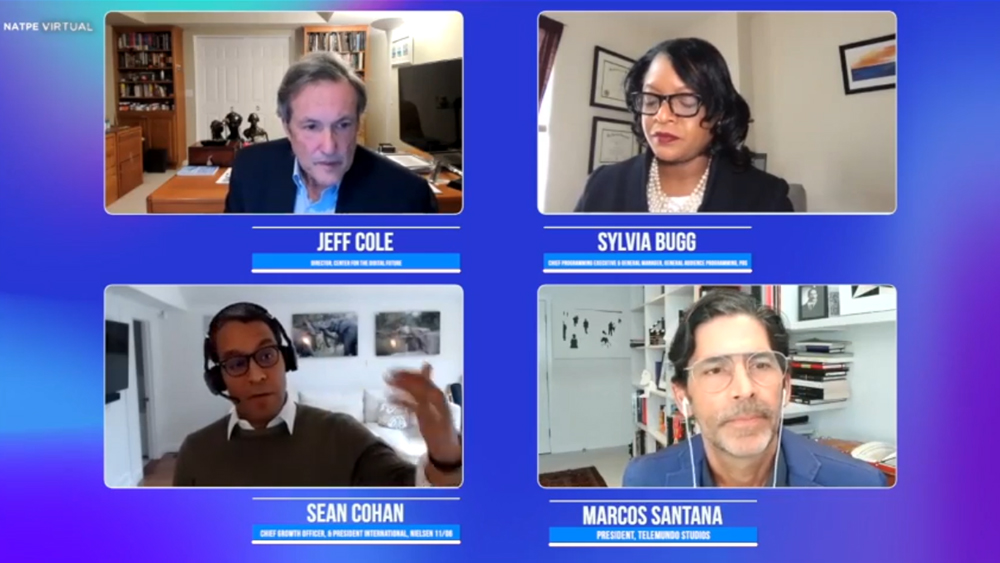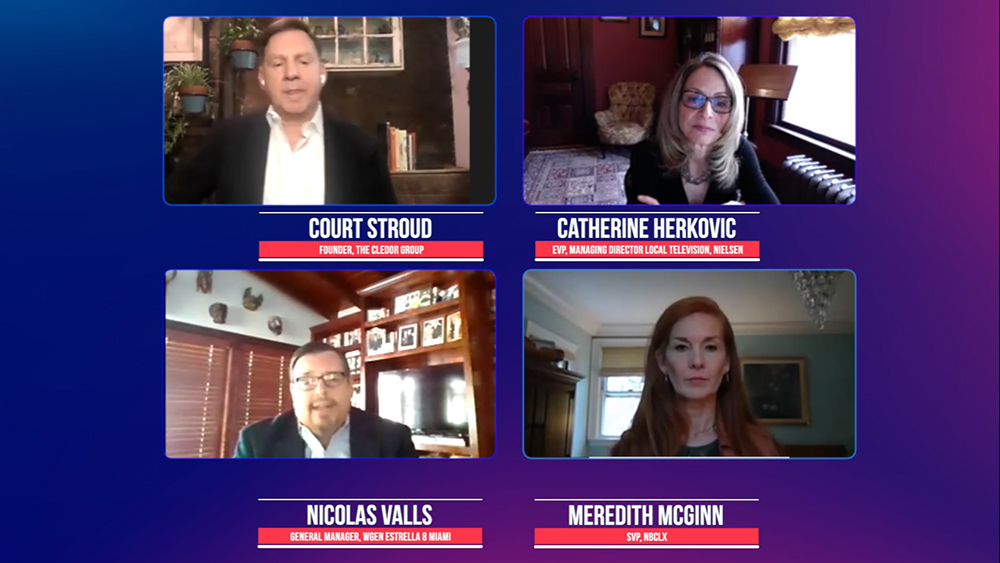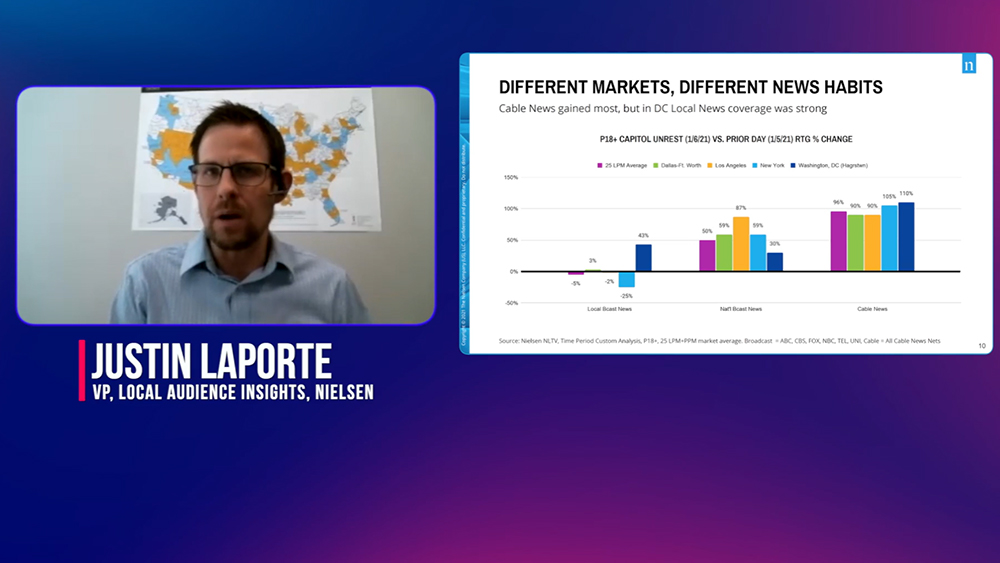As has been widely documented over the past year of living in a pandemic, consumers’ media habits have largely morphed amid our homebound, screen-dependent lifestyles. Yet as many are quick to highlight the exploding streaming video market, Nielsen is uniquely positioned to highlight the constant importance of local news, as well as how that genre is attracting a wave of new viewers—Gen Z.
That was one of the key messages Nielsen leadership shared at the recent NATPE Miami virtual 2021 conference, appropriately themed “A New Day for TV Stations.”
“It’s no surprise that April, which coincided with the start of the pandemic, was the highest total TV and news viewing month of the year, which it typically is not,” said Justin LaPorte, VP of Local Audience Insights, during his presentation. “News still represents a much higher percentage of people’s viewing day, and in November 2020, it was 10 percentage points higher in share of viewing than a year ago.
“When looking at 18-24 year olds (Gen Z),” he continued, “viewing rose the most on January 6th (during the Capitol riots), with a 142% increase for cable viewing and almost 50% for broadcast. This group represents a new demo for news, and while it still has a smaller part of the share for total news viewing, it’s a group that is watching more news on TV over the past year than we’ve seen previously.”
Media consumption has changed dramatically over the past year, with local TV gaining prominence during a heated political season, cries for racial justice and the ongoing pandemic, as Catherine Herkovic, EVP and Managing Director, Nielsen Local TV, discussed during a panel focused on transforming learnings from the past year into strategies for engaging viewers in 2021.
“Given the unusual times that we are living in, I find it logical that viewers want information that will help them to navigate day-to-day uncertainty, and they are turning to local news, which is a shining bright spot for TV,” said Catherine. “In fact, people watched over two billion more minutes of news in November 2020 than they did a year ago, and with over 43% of total viewing allocated to news, local news is by far the strongest genre within that.”
Importantly, however, local stations can’t focus on age groups alone when it comes to growth opportunities. They need to be focused on content choices and ensuring that they are including diverse audiences in their programming options.
“Diversity, equity and inclusion aren’t just a nice to have anymore; they’re an imperative,” said Court Stroud, panel moderator and Founder of the Cledor Group.
Nicolas Valls, General Manager, WGEN Estrella 8 Miami elaborated: “Pandemic conditions are shifting the way we approach content and news in particular, to be more reassuring and educational, rather than just running the headlines that are going to increase ratings, and that’s been driven by consumer and viewer preference. They’re telling us what they want, and we’re pivoting to their changing choices.”
While general news viewing has gone up, Meredith McGinn, SVP of COZI TV, NBCLX, and LX.TV, affirmed that the younger generation is increasing their engagement with local TV.
“The younger segment wants depth and context,” noted Meredith. “We know from the research we conducted that younger viewers consume news. We’ve seen double lift increases in that audience for our new network.”
While the influence of the pandemic and the events of 2020 have brought significant positive changes to local TV viewership and younger audience engagement, how did COVID-19 play into the impact on streaming and storytelling in the future?
Nielsen’s Sean Cohan, Chief Growth Officer & President, International, participated in a panel moderated by Jeff Cole, Director of the Center for the Digital Future, to discuss these topics.
“We think about local TV as an ecosystem which includes audio and digital. What’s interesting is that when you unpack advertising spend, growth is coming from small and medium size businesses which tend to gravitate to these local forms of reach,” said Sean. “I see growth in marketer interest and spend continuing. I think that there’s a fuel for the fire if local can continue to attract more users and viewers, which is an underlying fundamental that is very healthy.”
News had an extraordinary year in 2020, as did drama, niche drama and big events through streaming.
Acceleration, increased demand for streaming content and an insatiable viewership appetite with traditional TV and streaming, as well as new streaming and platform adoption, were undoubtedly popular trends last year. “There was a dramatic acceleration that we thought may happen over several years that happened over several months due to the pandemic.”
He continued, “We’ve been focused on keeping our people safe and coming up with innovation around remote installs, management of panels, and working towards a single cross-media solution, Nielsen ONE. For us, audience is everything, and the common thread among all of our clients is the need for reliable unbiased data to make strategic decisions.”
The social unrest of 2020 also called attention to the need for fairly representing viewership and helping the industry to be more representative, by putting diverse talent in front of and behind the camera.
“2020 was about innovation, adaptation and not wasting a crisis, and the importance of information and leadership to help navigate chaos and change,” Sean said.



